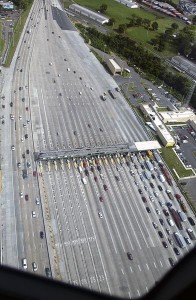CNE: P.R.’s fiscal situation stable but ‘quite fragile’

Puerto Rico’s public finances have stabilized but are still weak, its indebtedness levels and rates are unsustainable, its fiscal viability over the medium term is uncertain, and its economic outlook remains quite modest, said the Center for the New Economy’s Policy Director Sergio Marxuach during an analysis of the administration’s current and future budgetary activity.
However, in its analysis, the nonprofit think-tank also said the Commonwealth has “made great strides toward achieving fiscal stability” as General Fund expenditures have been brought under control, payroll expenses have decreased significantly since 2009 — when the Gov. Luis Fortuño administration came into power — the use of non-recurring revenue has diminished, and the structural deficit has been cut by 65 percent.
“On the other hand, Puerto Rico is still seriously dependent on federal funding, enlarging the tax base has proven difficult, and the structural deficit, while showing a generally declining trend since 2009, still exceeds $1 billion,” Marxuach said Tuesday. “Therefore, Puerto Rico’s fiscal situation, in our opinion, has stabilized during the last three years but it is still quite fragile.”
Perhaps more worrisome in the short term, he said, is the fact that Puerto Rico’s levels and rates of indebtedness are not sustainable. Puerto Rico’s total public debt totals $68.4 billion, an amount equal to 103.08 percent of its projected Gross National Product for fiscal year 2012 that ends June 30.
“Since 2000, Puerto Rico’s public debt has increased at a compound annual growth rate of 9.06 percent, while its GNP, at current prices, has increased an annual rate of 4.01 percent,” Marxuach said.
Compounding the problem are three main issues: the end of the Sales Tax Revenue Financing Corporation’s (COFINA) authority to issue additional debt; the phase-out of federal stimulus spending under the American Recovery and Reinvestment Act; and the Government Development Bank’s weak balance sheet.
The triple-whammy, he said, “will severely limit the flexibility of the Commonwealth’s financial managers to fund any unexpected expenditures, manage an unanticipated liquidity crunch, or cover unforeseen revenue gaps in the short term.”
Mid-term, the island faces a challenging fiscal and economic panorama as well because it remains to be seen whether the government will be able to generate enough recurring revenue streams to achieve structural balance, he said.
Heading into fiscal 2013, which starts July 1, the government will be dealing with a deficit of approximately $1.03 billion, which would be $413 million or 28 percent less than the $1.4 billion deficit the CNE estimated for Fiscal 2012.
Revenue, expenditures forecast
In terms of revenue, the General Fund budget will be $8.7 billion for fiscal 2013, or $100 million higher than this year’s total. The revenue forecast includes a significant increase in Sales and Use and Tax proceeds to $691 million in fiscal year 2013 from $560 million in fiscal year 2012. The $131 million, or 23.4 percent increase, will be generated from tighter enforcement strategies the government is implementing through the IVU Loto reporting system.

The government was betting on P3’s such as the one struck for the highways would shore up billions in new foreign investment. (Credit: © Mauricio Pascual)
The CNE believes the forecast is “inconsistent with both the historical pattern of Sales and Use Tax revenues and the current weak state of the Puerto Rican economy.”
That said, the think-tank put the year-over-year sales and use tax growth rate to 5 percent, estimated that the General Fund will receive some $588 million from the tax during fiscal year 2013
On the expenditures side, the CNE’s Marxuach noted that the new budget upholds the trend established by the Fortuño administration since 2009 of charging certain expenses against the Fiscal Stabilization Fund, which feeds from the proceeds of COFINA bond offerings.
For fiscal year 2013 these expenditures are pegged at $333 million, putting General Fund expenditures at around around $9.0 billion, which is some $177 million, or 1.91 percent lower than this year’s budgeted expenditures of $9.2 billion.
Ultimately, the CNE said Puerto Rico’s fundamental problem boils down to investment, which is not happening at an appropriate pace. Neither the government nor the private sector has been shelling out the money, which holds back economic growth.
“The administration was betting that its [Public-Private Partnership] program would be attractive enough to bring in billions in new foreign investment. Unfortunately, the program has failed to live up to initial expectations and its performance can be charitably described as an utter disappointment,” Marxuach concluded





